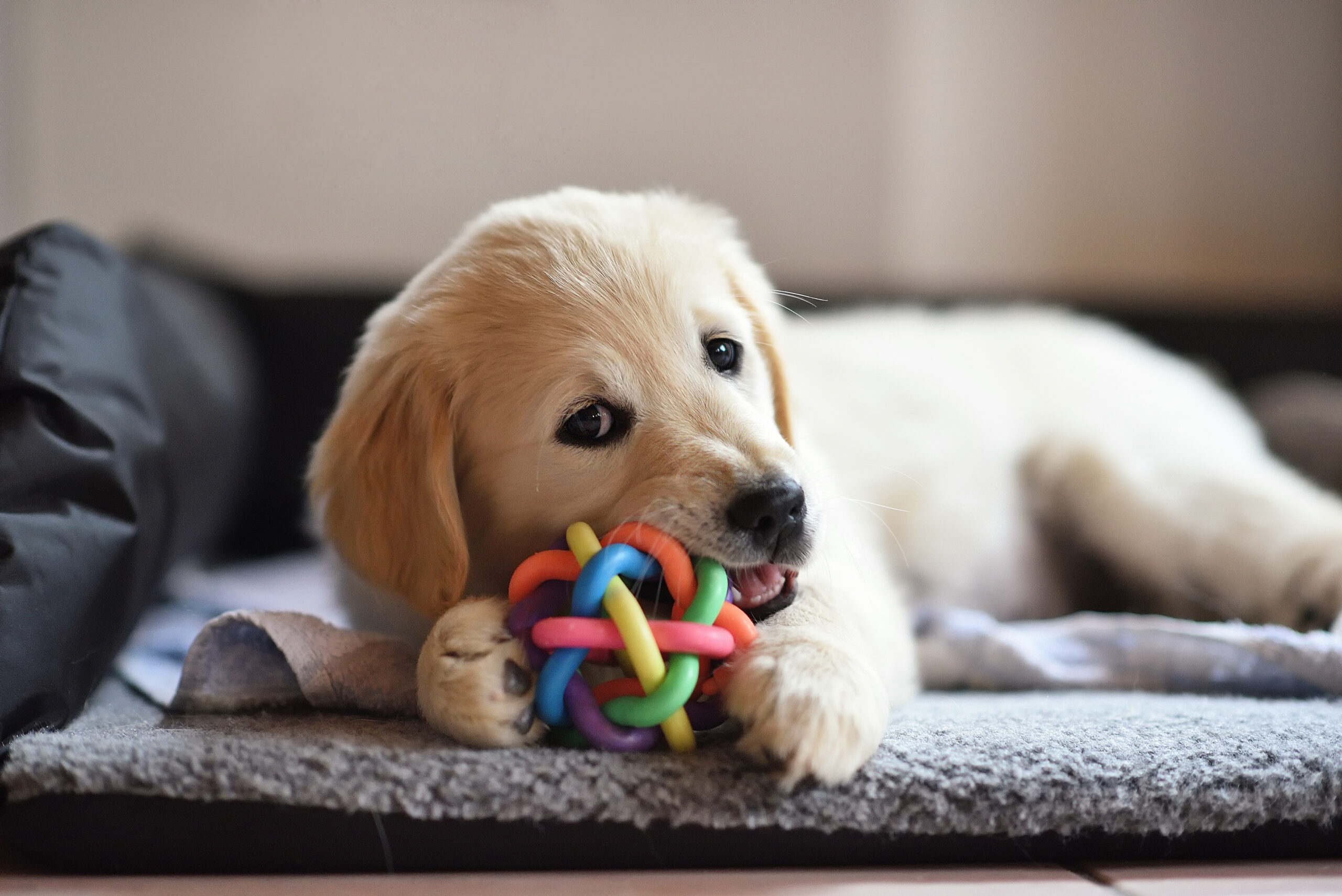Hey Ollie blog readers! We’re offering you an exclusive 60% OFF your starter box! Try now!
So, you think you’re ready to get a puppy? We are so excited for you! There is nothing more special than the bond you create with your dog. We’d know, we started Ollie because we love our dogs so much and wanted them to have the best nutrition possible.
To help you find and raise the best puppy for you and your family we have put together a comprehensive guide filled with our top 11 tips, tricks and of course all of our best resources! Here’s a preview of our guide:
- Prepare Your Finances
- Research Dog Breeds
- Rescue or Pure-Bred?
- Supplies You’ll Need
- Find Dog Profressionals
- Purchase Puppy Health Insurance
- How to Train & Socialize
- Basic Puppy Nutrition
- Plan for Lots of Sleep
- Your Puppy’s Wellness
- Make a Plan for Emergencies
We’ll take you through all of the research and preparation and help you figure out how much money you will need, what type of dog will be best for you and how to set up your home.
Then, we will help you find the best groomer, vet, trainer and caretakers for your dog. We offer tips and tricks for training and keeping your pup happy and healthy. This includes what to feed your pup and what to watch for. We’ll even cover when your should call the vet.
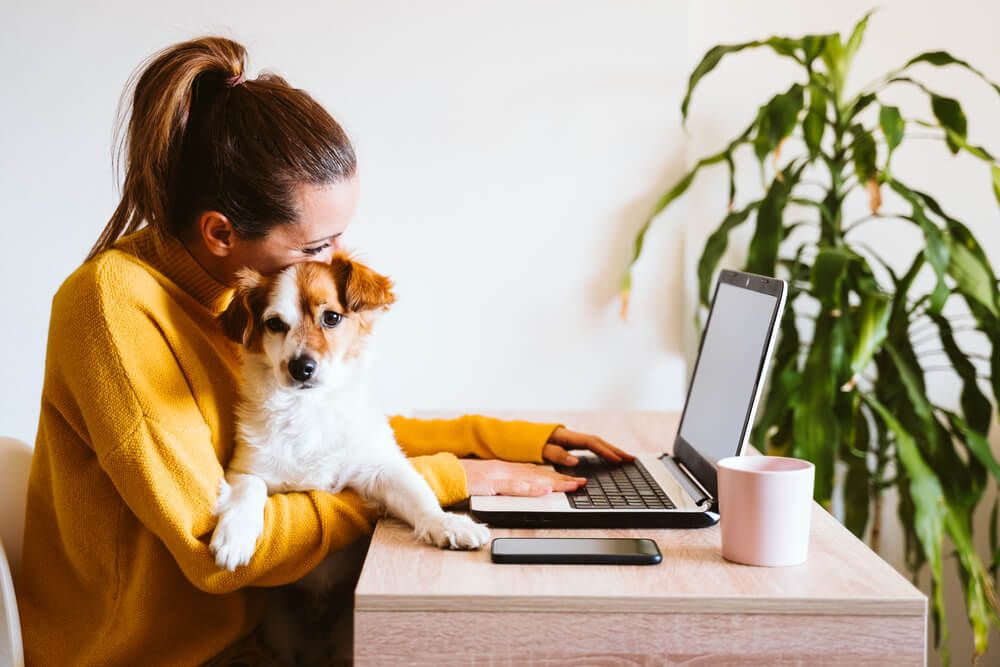
#1: Prepare Your Finances
In our blog post, The Economics of Dog Ownership, we break down the real costs of getting and raising a dog. We even share some tips to keep costs down if you are on a budget!
Take a few minutes to read this first before you continue with the rest of the articles in this guide. By understanding all of the costs associated with bringing a dog home before you do so, you won’t be surprised by unexpected costs.
One of the areas that a lot of new pet owners don’t account for is the cost of unplanned vet visits for injury or illness. By having some money set aside for this purpose as well as investing in health insurance for your pup will help you plan for and pay for any care that is needed to keep your new best friend happy and healthy.
#2: Research Dog Breeds
Before you start contacting breeders or visiting rescues, you will want to consider you family, lifestyle and what type of dog might fit best. If you live in an apartment, we’ve rounded up some of the best dog breeds for apartment dwellers. For a family that includes children, you may want to consider a breed that is suited for family life. Are you or someone in your home getting older? There are many great breeds that are well suited to life with an older person.
If you have allergies, that doesn’t necessarily mean you can’t have a dog. Some allegy sufferers are fine with breeds that have hair instead of fur. While there is no such thing as a truely hypoallergenic dog, depending on exactly what causes the allergic reaction a non-shedding dog might be a perfect fit for your family.
For families who are very active and enjoy the outdoors, consider one of the breeds on our list of Best Breeds for Hiking. At the opposite end of the spectrum, if you prefere to Netflix and chillout on the couch maybe skip a puppy and add a senior dog to your family. There are many unexpected perks of living with a senior pup.
Do you have a specific breed in mind? You can learn about the personalities, pro’s and con’s of some of the most popular breeds easily. For information about breed standards, personalities, and health you can consult the American Kennel Club or the breed specific clubs linked there.
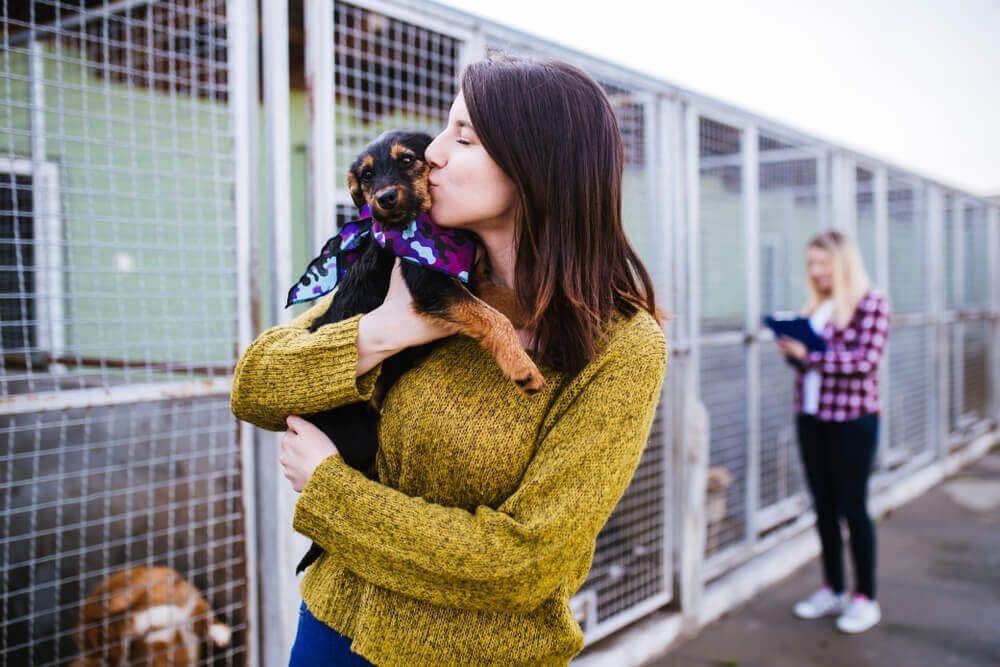
#3: Rescue or Pure-Bred?
Whether you’re committed to #adoptdont shop, or you’re looking for a specific breed and want to purchase a pup from a breeder, it is a very personal decision. You can find almost any breed you are looking for through a rescue if you’re willing to be a little patient and persistent. If you are planning on showing, competing or working with your dog in any capacity, you may opt to purchase from a breeder so that you know more about your dog and their bloodline.
Whatever you decide, you will want to do your due dilligence. Not all breeders or rescues are reputable. Puppy mills are still prevalent around the country in spite of many animal activists and humane law enforcement officers best efforts to shut them down.
There are so many reasons why finding your perfect match at a shelter or rescue is a great option. We’ve rounded up nine of our favorites for you to consider. Even if you are very excited about rescuing the perfect pup read these
five tips first!
#4: Supplies You’ll Need
Before your puppy comes home, you will need time to get all of the supplies they will need and get your home ready. As outlined in our guide to the economics of dog ownership, you should be prepared to spend some cash to prepare!
You’ll want to grab these 10 items first and then start working in the puppy proofing! Our 9 step checklist will have you ready in no time.
Live in an apartment? We can help you get ready and make your small apartment dog friendly.
We’ll get to covering delicious treats later but for now, you’ll want to make sure you have somewhere to put those tasty morsels. We rounded up our favorite treat jars that will look great no matter your home decor style.
Now that your house is all set, its time to have some fun thinking about giving your pup an awesome name. Some puppy parents say their pup’s name just came to them or they looked like their name. Others have it planned for weeks or months while looking. Either way, you’ll want to know what you’re going to call your dog so you can get it printed on their ID tag right away.
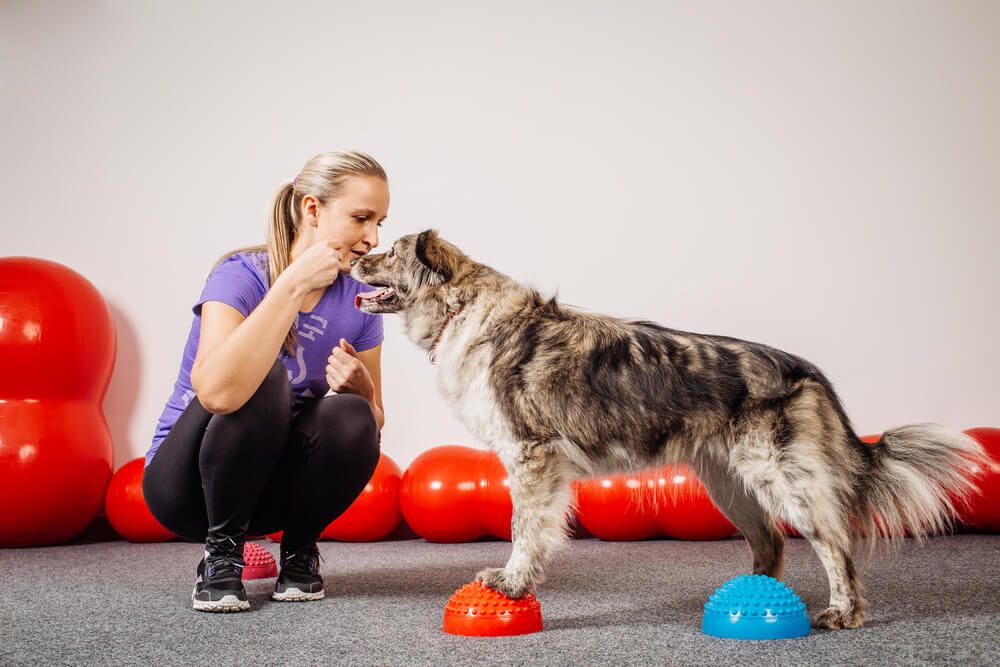
#5: Find Dog Professionals
While you will be your new puppy’s person (or people if you have a partner or family) you will still need some help keeping your puppy healthy and safe. It is important to find and build a relationship with a veteranarian you trust.
It helps to ask friends near you if they have a great vet. Look online for reviews as well. This person will be a resource for you as your puppy grows and will help keep them healthy and safe.
The vet’s office isn’t most dog’s favorite place, you can make it a more enjoyable experience by finding a certified fear free practice. These vets have special training to not only care for your pup’s physical health but also their emotional wellbeing. This doesn’t mean the doctor will never have to perform procedures that can be uncomfortable for your pup (like vaccines or bloodwork) but it does mean they’ll do everything in their power to keep your pup feeling safe and confident. You can practice cooperative care techniques with your pup at home to help. Just ask your vet how to get started.
Even if you are planning to do most of your training at home, in most cases working with a qualified trainer is a good idea. Group lessons are great for puppies to learn how to focus on you and socialize appropriately with other dogs.
For rescues who are nervous or for specific issues, private lessons might be a better fit. Speak with your trainer before bringing your puppy to classes if you arent sure. Some trainers offer an orientation or consultation for humans only. That way you can ask questions and focus on understanding how things work and not have to worry about keeping your puppy under your control!
Having a great trainer will help you if you find that you are having some new puppy blues too. In our blog post,Why It’s Okay to Have Puppy Remorse, and What to Do About It, we walk you through a few reasons you may second guess yourself – and that is normal. Raising a puppy can be really hard work. Make sure you have the right support and you’ll get through it. Like most things that are worth it, puppies can be a challenge to train and raise.
Finally, you may need a daycare provider, dog walker and a pet sitter or bording facility to watch your pet when you are traveling or in emergency situations. Ask for recommendations and do thourough background checks. Google the business, look for online reviews and ask friends and neighbors who they use. Great professionals will always answer any question and you might have and provide references or allow you to observe.
#6: Purchase Puppy Health Insurance
Many pet parents opt to get health insurance for their pups. There are many carriers and plans to choose from. Depending on your pup’s breed and health, your plan’s price and what is covered may vary widely. Most insurance plans cover emergencies only and you are responsible for all routine care including wellness exams, flea, tick and heartworm prevention and vaccines. Another important note, when determining what will and will not be covered by your plan: no plan covers pre-existing conditions. If you rescue a dog with a histoy of tumors or an ACL tear, any injury or treatment need related to these conditions will not be covered.
In an emergency or when your pet isn’t feeling well, finances are going to be the last thing you want to think about. Having an insurance plan that has you covered will relieve a lot of stress and financial burden. Some plans even cover dental work for dogs which can be very expensive since doggie dental procedures including routine cleaning need to be done under anasthesia. Do you research before you make a purchase and learn more about the different types of plans and what they do and don’t cover!

#7: How to Train & Socialize
If you have children, you know how important it is to teach them how things work and how to use their manners. The same is true for your new pet. Your puppy will need to learn where they eat, sleep and go to the bathroom. They will also need to learn good manners when interacting with people other dogs and maybe even other animals they might encouter like cats.
Good, consistent positive training and socialization can also prevent behavior issues that come from anxiety and not having the confidence to navigate new experiences.
From teaching the basics like sit and stay to troubleshooting problem behaviors like demand barking and chewing, you will need a plan and to put in some work to help your puppy become a well behaved dog.
If you have decided that certain furniture is going to be dog free, setting that boundry early and continuing to enforce it will set you up for success.
Remember that young puppies have very short attention spans so training sessions in the beginning might only last about 5 minutes and you will want to do a few each day.
Some of the most important things to start with are teaching your dog about their crate and how to walk on a leash.
You want your puppy to feel safe being in a crate so that they will rest while you do things like run errands, go to work or even cook dinner. If your puppy is scared, stressed or even upset in the crate they might bark, cry or try to dig their way out. Digging or chewing can cause injury and the all day barking can be disruptive! Start with short sessions in the crate and offer rewards like pets, cuddles and tasty treats for good behavior.
While it might be tempting to give your dog a cuddly toy or bone while they are in their crate – don’t – stuffed toys and bones can be choking hazards or cause an obstruction if they’re eaten. You can give your pup an appropriate sized Kong (or similar) with some peanut butter or cream cheese to work on while you’re gone.
Walking on a leash is another important skill for your puppy to start working on right away. This is important for safety reasons. You don’t want your puppy to learn its okay to drag you up to another dog – as this can lead to problems down the line. Especially if the other dog doesn’t like puppies in their face! Skills like walking with you, not pulling and even sitting at the street corners for city pups will serve you well. Youll also want to work on recall skills so that if your pup ever gets off their leash or tries to run away you’ll be able to get them back quickly and safely.If you don’t know how to teach your pup to walk safely, call in a pro!
Socialization isn’t just about meeting other dogs or learning to play. You will want to socialize your dog with as many people as possible. This includes children (never leave your puppy and a child unsupervised), older people, people with different hairstyles, people in scarves or jackets and even people with crutches or in wheelchairs if you know any! Learning to greet all people appropriately is a great skill for your puppy to learn. You might want to teach your puppy to sit politely for pets but that’s up to you. That might not be as appropriate for a smaller dog since it could make it harder for someone to bend down to pet them.
It’s also not only okay but important to advocate for your puppy when socializing, if your puppy is showing signs that they are scared, tired or uncomfortable, you should give them a break. You can say no if someone asks to pet your pup and they’re not really into being pet or have had enough.
In addition to socializing with people, you want to socialize your puppy to surfaces and objects. This might include learning to walk on different types of flooring like hardwood or carpet or even up and down stairs or a ramp. You also want to expose your puppy to dirt, grass, sidewalks and different places like the vet, groomer, a sitter’s house or even their "grandparents".
Object socialization might include toys, bicycles, skateboards and cars, or even different types of collars, leashes or harnesses.
The more people, places and things you can expose your puppy to the more confident they will become when faced with something new. Remember to only take your pet into places where they are invited. Most retail stores, movie theaters and restaurants are reserved for service dogs only. Many urban boutiques are pet friendly so if you aren’t sure – just ask before heading in with your puppy. Many of the pet friendly stores and bank branches keep treats on hand, we bet your puppy will catch on to this pretty fast!

#8: Basic Puppy Nutrition
Your pup will probably love to eat! It is critically important that you that you feed them in a way that will allow them to maintain a healthy weight and energy levels. You want to make sure your puppy is getting enough to eat as they are going to grow rapidly in the first 6 months to a year depending on their breed.
A well balanced diet for your puppy includes nutritious food, treats and even "people" foods like fresh fruit, meat and vegetables. Did you know that (in moderation) your pup can enjoy snacks like popcorn and string cheese?
We’ve done the research to help you feed your best friend things that make them happy. If you love to cook and bake, we’ve even rounded up some easy and delicious recipes so that you can make your best friend their own very special treats!
Since we make pet food, this is a topic that is near and dear to our hearts. We hope that you will check out our delicious recipes and give your puppy the best nutrition we offer from the start. We use an onboarding quiz to learn about your puppy and customize a meal plan to meet their needs.
So, Can My Dog Have…?
If you’re wondering about what you can and can’t feed your pup, we have asked the experts and done our due dilligence to find out what foods make the best treats to add to your pup’s diet. As a reminder, no more than about 10% of your dog’s caloric intake should come from treats. Some of these foods like lean proteins and fruit can be part of a healthy and wholesome diet. Ask your veterinarian if you are unsure how much of a particular food or treat your pup can have.
Good choices for most pups:
- Vegetables like tomatoes, carrots, spinach, kale, and squash
- Fruit including fresh blueberries and melon
- Herbs like parsley or rosemary
- Olive oil and healthy fat like peanut or almond butter
- Flax and chia seeds
- Yogurt and some cheeses
- Fish like salmon, mussels or oysters
Forbidden foods: Don’t ever offer these to your pup
- Garlic, chives, onions and shallots
- Grapes or raisins
- Chocolate
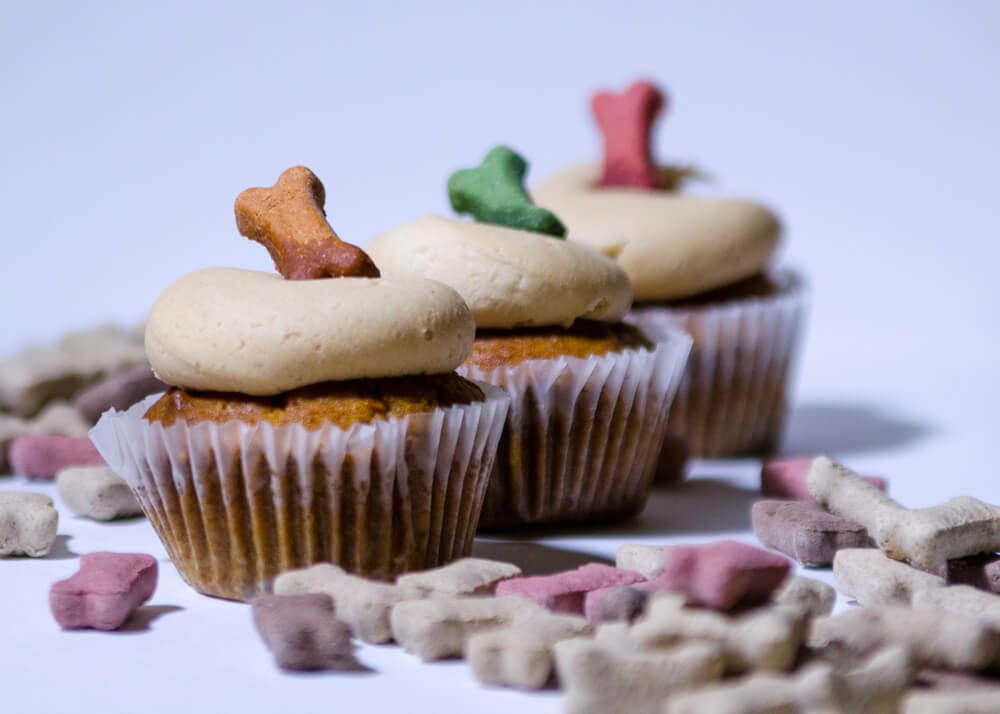
Cooking and Baking for Your Pup
If you enjoy cooking and baking, there are plenty of great recipes you can make to help your pup feel special. From soup when your best friend isn’t feeling well to birthday pupcakes, there are so many fun recipes that your dog might enjoy. We’ve rounded up some of our favorites and explored ways you can use our food to make delicious treats too!
For a healthy boost of super foods try these healthy pupmpkin treat recipes or some of our favorite recipes featuring the mightyblueberry. To beat the heat and keep your pup refreshed, you might consider one of our healthy pupsicle recipes or some doggie ice cream.
#9: Plan for Lots of Sleep
If you have never raised a puppy before, it might come as a surprise that even with all of their energy, puppies need a lot of sleep. You will want to create a schedule that includes plenty of naps in a quiet place throughout the day. An overtired puppy can easily become cranky and mouthy.
At first, your pup will probably nap in their crate but we’ve rounded up some of the best beds out there so you can always be sure your pup has a cozy place to relax.
You might also be wondering if your pup should (or shouldn’t) sleep in your bed at night. We did some research to help you decide, but ultimately it depends on your schedule, lifestyle and your preference (along with your pup).
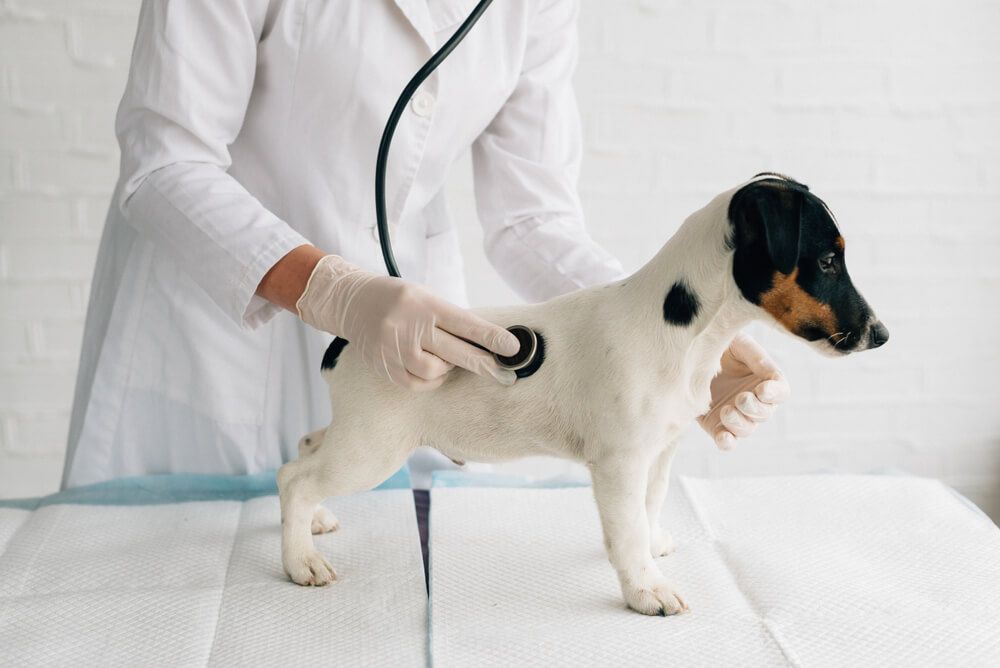
#10: Your Puppy’s Wellness
As a dog owner, there are many things you can do every day to maintain your pup’s health and help them live as long as possible. These include feeding them the best food (Ollie’s delicious recipes), giving them enough exercise and mental stimulation, as well as preventing or treating any illnesses or injuries. Keeping your dog happy and healthy is also a great way to bond with your best friend.
So you don’t panic at the first sign of a tummy ache (trust us, it will happen) check out our 10 warning signs that your pup needs to see a vet.
Should the vet need to give your new best bud some antibiotics or another medication you may be wondering how to get your dog to take a pill. Our favorite tip is to hide medicine in some Ollie food, peanut butter or cream cheese. If your pup is especially stubborn, try a little whipped cream or ice cream with the vet’s permission if your dog can have dairy.
Gastrointestinal upset is probably one of the more common reasons many puppies end up at the vet. Vomiting, diarrhea, bloat, and pancreatitis are all things your vet will look for. In most cases these upsets can be remidied with a few days of bland diet, but it is much better to be safe than sorry.
Other indications your pup might need to get to the vet quickly include constipation (we know, no fun), or finding blood in your pup’s vomit, urine, or stool.
Frankly speaking, if your pup stops eating, playing or starts showing any sudden behavioral changes it is a good idea to call the vet’s office and determine if your pup needs to be seen. Some behavioral issues are actually signs of illness or injury so if you see something concerning, its always worth talking to your vet and getting it checked out in case there is an underlying medical issue.
#11: Make a Plan for Emergencies
While we hope you never need to use this information, we know emergencies happen. From fairly routine like a nasty stomach bug or injury from playing too hard at the park to worst case scenarios like house fires, we want to help you feel as prepared as possible for whatever life throws at you and your new four legged family member.
We covered some of the medical emergencies in the health and wellness section of this guide so we hope that helps you know when to get to the vet STAT. You also want to ensure that you have a plan for an emergency in your home such as a fire, hurricane, tornado or flood.
Keeping working smoke detectors in your house, testing them regularly and having a plan for where you’ll go if you need to evacuate isn’t just about you any more. You need to consider your pup as well. We recommend having a ‘go bag’ packed with copies of important papers, bottled water, emergency cash and cards and any perscription medicine so you can evacuate quickly. For your pup you may want to add some dry food or treats and a spare leash/collar set and collapsable dish.
Let’s wrap this puppy up!
We hope this information helps you feel more prepared to become a new pet parent. It may seem like a lot to take in all at once so you might want to bookmark this guide and revisit it as you need to.
We want you to know that we are here for you every step of the way. From providing information through our blog, Dog Eared to helping you nourish your new best friend with the highest quality human-grade food.
We hope the new addition to your family enriches your life the way our dogs have enriched ours.
The Ollie blog is devoted to helping pet parents lead healthier lives with their pups. If you want to learn more about our fresh, human-grade food, check out MyOllie.com.
Tagged As:

The nutrition your dog needs,
the food they want.

Enjoying our articles? Subscribe our Newsletters and get new articles directly to your inbox
You might also like
13 May 2025
8 MINS READ
Puppy Training Guide & Behavior Timeline
Bringing home a puppy is pure magic. It’s also pure chaos—tiny teeth, zoomies, accidents in the house, and moments that make you wonder if you’re raising a future genius or a tiny tornado. …
by Ollie Pets
10 May 2025
12 MINS READ
New Puppy Checklist: Guide To Prepare For A New Dog
Bringing home a new puppy? This checklist covers everything new dog owners need—from essential supplies to training, feeding, and first vet visits.
by Ollie Pets
3 April 2025
9 MINS READ
Home Remedies for Fleas on Dogs: 10 Natural Ways That Actually Work
Wondering what kills fleas on dogs instantly and naturally? If your pup is scratching like crazy, it may be time to take action. In this guide, we’ll show you the most effective home remedies for…






